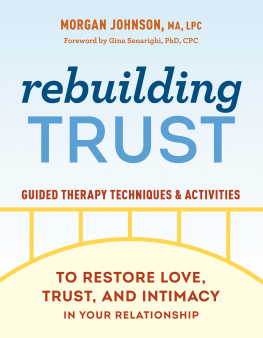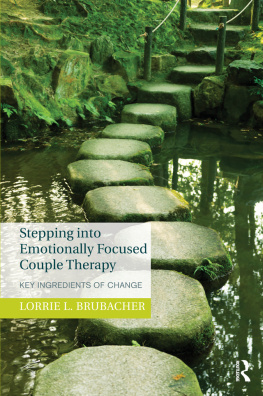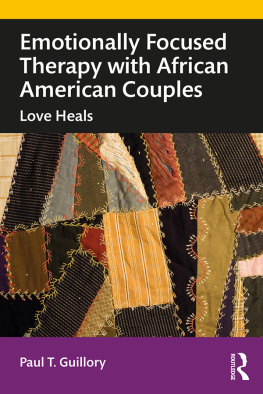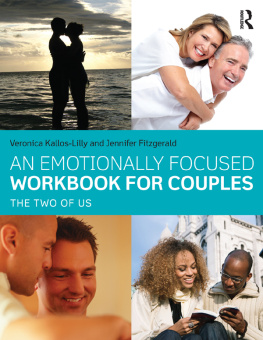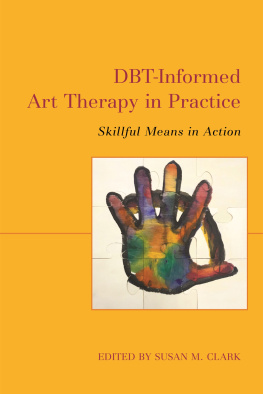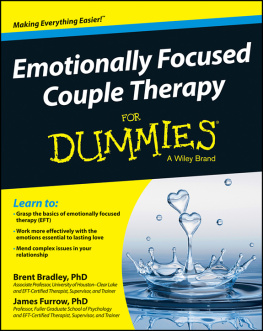Susan M. Johnson - Practice of Emotionally Focused Couple Therapy: Creating Connection
Here you can read online Susan M. Johnson - Practice of Emotionally Focused Couple Therapy: Creating Connection full text of the book (entire story) in english for free. Download pdf and epub, get meaning, cover and reviews about this ebook. year: 2012, publisher: Taylor and Francis, genre: Home and family. Description of the work, (preface) as well as reviews are available. Best literature library LitArk.com created for fans of good reading and offers a wide selection of genres:
Romance novel
Science fiction
Adventure
Detective
Science
History
Home and family
Prose
Art
Politics
Computer
Non-fiction
Religion
Business
Children
Humor
Choose a favorite category and find really read worthwhile books. Enjoy immersion in the world of imagination, feel the emotions of the characters or learn something new for yourself, make an fascinating discovery.
- Book:Practice of Emotionally Focused Couple Therapy: Creating Connection
- Author:
- Publisher:Taylor and Francis
- Genre:
- Year:2012
- Rating:3 / 5
- Favourites:Add to favourites
- Your mark:
- 60
- 1
- 2
- 3
- 4
- 5
Practice of Emotionally Focused Couple Therapy: Creating Connection: summary, description and annotation
We offer to read an annotation, description, summary or preface (depends on what the author of the book "Practice of Emotionally Focused Couple Therapy: Creating Connection" wrote himself). If you haven't found the necessary information about the book — write in the comments, we will try to find it.
Practice of Emotionally Focused Couple Therapy: Creating Connection — read online for free the complete book (whole text) full work
Below is the text of the book, divided by pages. System saving the place of the last page read, allows you to conveniently read the book "Practice of Emotionally Focused Couple Therapy: Creating Connection" online for free, without having to search again every time where you left off. Put a bookmark, and you can go to the page where you finished reading at any time.
Font size:
Interval:
Bookmark:

The Practice of Emotionally Focused Couple Therapy
Series Editor: Natalie H. Gilman
The Brunner-Routledge Basic Principles into Practice Series is designed to presentin a series of concisely written, easily understandable volumesthe basic theory and clinical principles associated with a variety of disciplines and types of therapy. These volumes will serve not only as refreshers for practicing therapists, but also as basic texts for the college and graduate level.
The Practice of Emotionally Focused Couple Therapy SecondEdition: Creating Connection
Susan M. Johnson, Ed.D.
Manual for Clinical Psychology Trainees, Third Edition
James P. Choca, Ph.D. and Eric J. Van Denburg, Ph.D.
Clinical Social Work: Definition, Practice, and Vision
Rachelle A. Dorfman, Ph.D.
The Spectrum of Child Abuse: Assessment, Treatment, and Prevention
Kim R. Oates, M.D.
Psychosomatic Disorders: Theoretical and Clinical Aspects
Ghazi Asaad, M.D.
Therapy with Stepfamilies
Emily B. Vishner, Ph.D. and John S. Vishner, M.D.
Psychotherapeutic Metaphors: A Guide to Theory and Practice
Philip Barker
Essentials of Hypnosis
Michael D. Yapko, Ph.D.
Understanding Mental Disorders Due to Medical Conditions or Substance Abuse: What Every Therapist Should Know
Ghazi Asaad, M.D.
Essentials of Psychoanalysis
Herbert S. Strean, D.S.W.
Family Therapy: Fundamentals of Theory and Practice
William A. Griffin, Ph.D.
The Practice of Emotionally Focused Couple Therapy
Creating Connection
Second Edition
Susan M. Johnson

NEW YORK AND HOVE
Published in 2004 by
Brunner-Routledge
270 Madison Avenue
New York, NY 10016
www.brunner-routledge.com
Published in Great Britain by
Brunner-Routledge
27 Church Road
Hove
East Sussex BN3 2FA U.K.
www.brunner-routledge.co.uk
Copyright 2004 by Taylor & Francis Books, Inc.
Brunner-Routledge is an imprint of the Taylor & Francis Group.
This edition published in the Taylor & Francis e-Library, 2011.
To purchase your own copy of this or any of Taylor & Francis or Routledges collection of thousands of eBooks please go to www.eBookstore.tandf.co.uk.
Cover design: Elise Weinger
Cover image: Farida Zaman/CORBIS
All rights reserved. No part of this book may be reprinted or reproduced
or utilized in any form or by any electronic, mechanical, or other
means, now known or hereafter invented, including photocopying and
recording, or in any information storage or retrieval system, without
permission in writing from the publishers.
10 9 8 7 6 5 4 3 2 1
Library of Congress Cataloging-in-Publication Data
Johnson, Susan M.
The practice of emotionally focused couple therapy : creating
connection / Susan M. Johnson.2nd ed.
p.: cm.(Basic principles into practice series)
Includes bibliographical references and indexes.
ISBN 0-415-94568-2 (pbk. : alk. paper)
1. Marital psychotherapy. 2. Focused expressive psychotherapy.
3. Emotions. I. Title. II. Series.
(DNLM: 1. Couples Therapy.WM 430.5.M3 J69p 2004]
RC488.5.J59 2004
616.89 1562dc22 2004002316
ISBN 0-203-84387-8 Master e-book ISBN
ISBN 0-415-94568-2 (Print Edition)
Copyright 2011 Mobipocket.com. All rights reserved.
Reader's Guide
This ebook has been optimized for MobiPocket PDA.
Tables may have been presented to accommodate this Device's Limitations.
Table content may have been removed due to this Device's Limitations.
Image presentation is limited by this Device's Screen resolution.
All possible language characters have been included within the Font handling ability of this Device.
This book isdedicated, like the first edition, to my
generous and loving partner, John Palmer Douglas
the love of my life.
I told you so. Almost ten years ago, I wrote the foreword tothe first edition of The Practice of Emotionally Focused Couple Therapy, and predicted that this book and the method of therapy it describes would lead the field of couple therapy back to a saner and more human view of treating troubled intimate relationshipsand it has.
Not that this was such a brilliant prediction on my part, asall the signs pointed in that direction. Object relations approaches to couple therapy began to be resurrected and refined about a decade and a half ago, and rekindled an interest in the inner lives of intimate partners that had been sorely lacking for the first three decades in the history of family therapy (Gurman & Fraenkel, 2002). But object relations theory, as compelling and powerful as I personally find it to be in helping understand marital problems (Gurman, 2002), had never quite become mainstream in the MFT field, partly because ofits unfortunate association with the earlier psychoanalytic thinking that the pioneers of family therapy so completely eschewed, and partly, maybe mostly, because of its cumbersome language and inaccessibility to most clinicians.
During roughly the same period that object relations therapy with couples was staging a comeback, behavioral approaches were in their heyday, and seemed to offer a genuinely teachable, researchable, and rational alternative. Unfortunately for these approaches, the data seemed to indicate that their effects were neither as likely nor as lasting as had been hoped. Researchers tried to explain what was missing from typical behavioral intervention with couples that seemed to put a ceiling on its helpfulness. Alas, while behavioral methods had seemed to be a rational alternative to the murky psychodynamic (preobject relations) approaches of the preceding several decades of couple therapy, they were, in retrospect, perhaps a bit too rational. That is, observability of behavior and attention to cognitive processes were the dominant characteristics of these ways of working with couples, but affect took a backseat. Not that it had to. There was absolutely no reasonand there still is no reason, from a behavioral and social learning theory perspectivenot to attend to affect, even highlight it, in couple therapy. As behavior therapists started to recognize the limitations of their methods for bringing about change in couple relationships, they gradually incorporated more acceptance-ori-ented interventions, most of which, in my view, were inch-ing closer and closer to modern psychodynamic styles and, interestingly, to the style of EFT therapiststhat is, of Sue Johnson and her colleagues. Behavior therapy with couples had confronted its affect phobia and been desensitized! But behavior therapy no longer merely did not fear affect; it actually embraced affect. Why? Because, as EFT theorists had been saying all along, it is emotion that organizes attachment bonds, and, after all, long-term, committed relationships are about attachment.
There is nothing more fundamental, undeniable, and human about intimate relationships than attachment bond-ing. Attachment is not some saccharine idea dreamed up by feel-good humanists, as I think some people believe. It is a scientifically substantiated basis for understanding human relatedness, with deep-lying roots in modern neuroscience as well as modern family psychology (Lewis, Amini & Lannon, 2000). Attachment theory allows an appreciation of the inevitable interaction between the inner and outer lives of people that is truly integrative and systemic. Not
Next pageFont size:
Interval:
Bookmark:
Similar books «Practice of Emotionally Focused Couple Therapy: Creating Connection»
Look at similar books to Practice of Emotionally Focused Couple Therapy: Creating Connection. We have selected literature similar in name and meaning in the hope of providing readers with more options to find new, interesting, not yet read works.
Discussion, reviews of the book Practice of Emotionally Focused Couple Therapy: Creating Connection and just readers' own opinions. Leave your comments, write what you think about the work, its meaning or the main characters. Specify what exactly you liked and what you didn't like, and why you think so.



